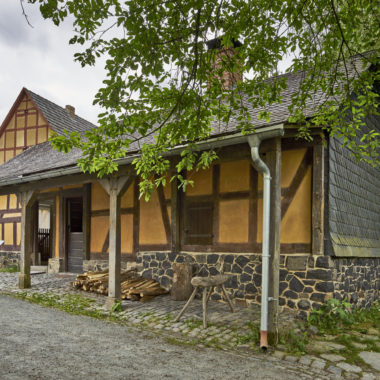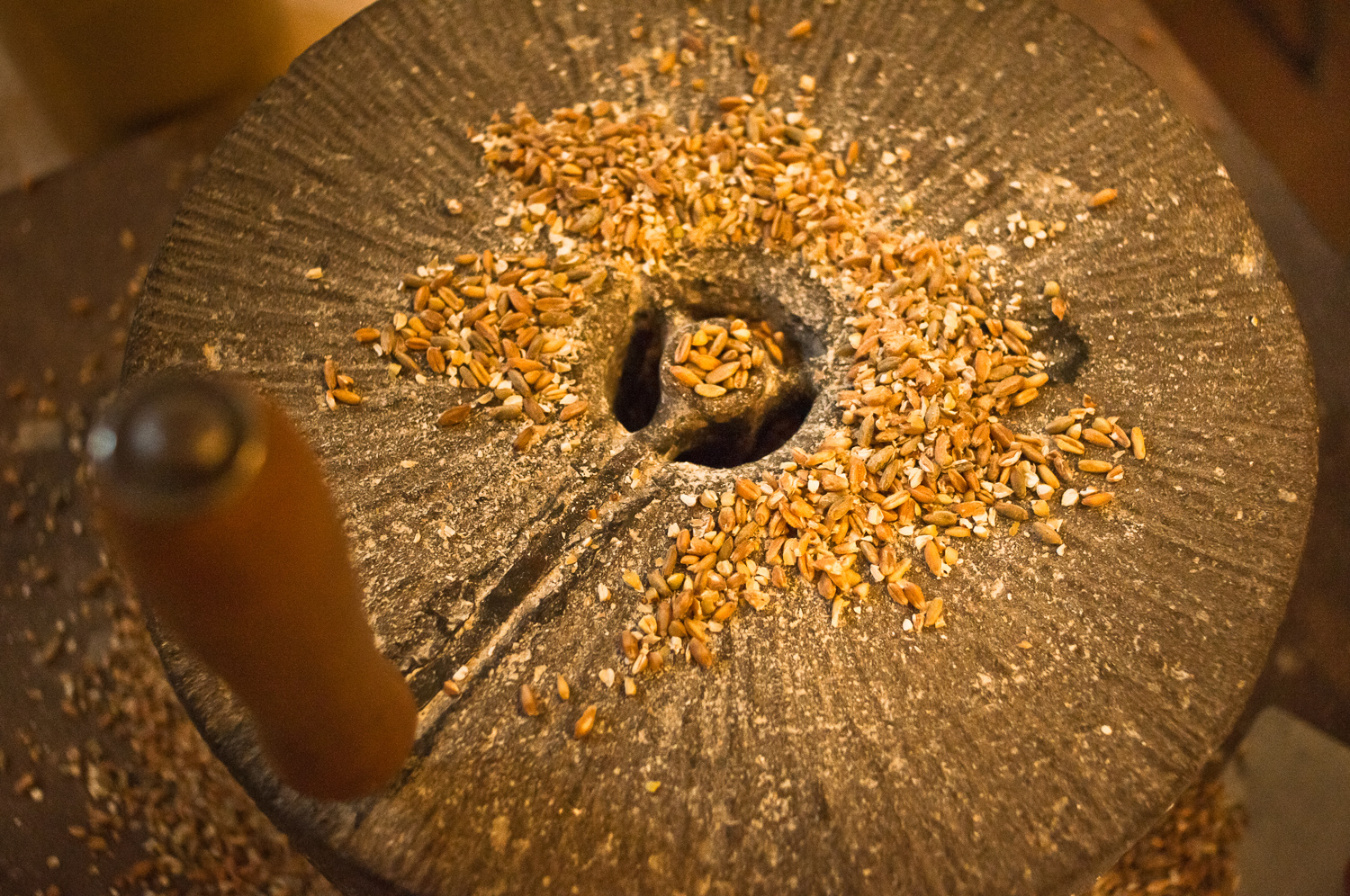
Baking Bread

For a long time, baking as a professional trade was unknown in the rural areas of Hesse. Baking bread was still part of self-sufficiency in rural communities up to around 1945. Doughs were kneaded from flour, salt and water at home. The loaves shaped from the dough were then baked in communal ovens. Larger farmsteads often had their own bakehouse. From about 1750 on, villages were ordered by the various authorities to build community bakehouses. This was intended to save wood and improve fire safety. The procedure was laid out in a baking code. In the village of Nidda, for example, it stipulated that the baking order for the following week would be determined by drawing lots on Saturday evening as the bells rang in the holiday. This was necessary as the first family had to fire the oven, which had cooled down on Sunday, early on Monday morning, which required at least one bundle of fuel more than the others would need. On the eve of the baking day, the starter dough was prepared. A small part of the last baking day’s dough had been put aside and maintained over the week. This was added, and the lactic acid bacteria multiplied quickly enough to leaven the entire dough overnight. The next day, warm water and salt were added and the dough was kneaded until it had the desired consistency. This was very exhausting work. Once the dough had been prepared, it was divided into the portions necessary for individual loaves. These portions were kneaded again and then shaped into loaves which were put into woven baskets for proving. These were then carried on a wooden board to the bakehouse. While all this was going on, the oven in the bakehouse was being preheated, which required a great deal of experience, as too high a temperature would burn the bread’s crust while too low a temperature would leave the middles of the loaves raw.

Mit dem Laden der Karte akzeptieren Sie die Datenschutzerklärung von Google.
Mehr erfahren
More links





